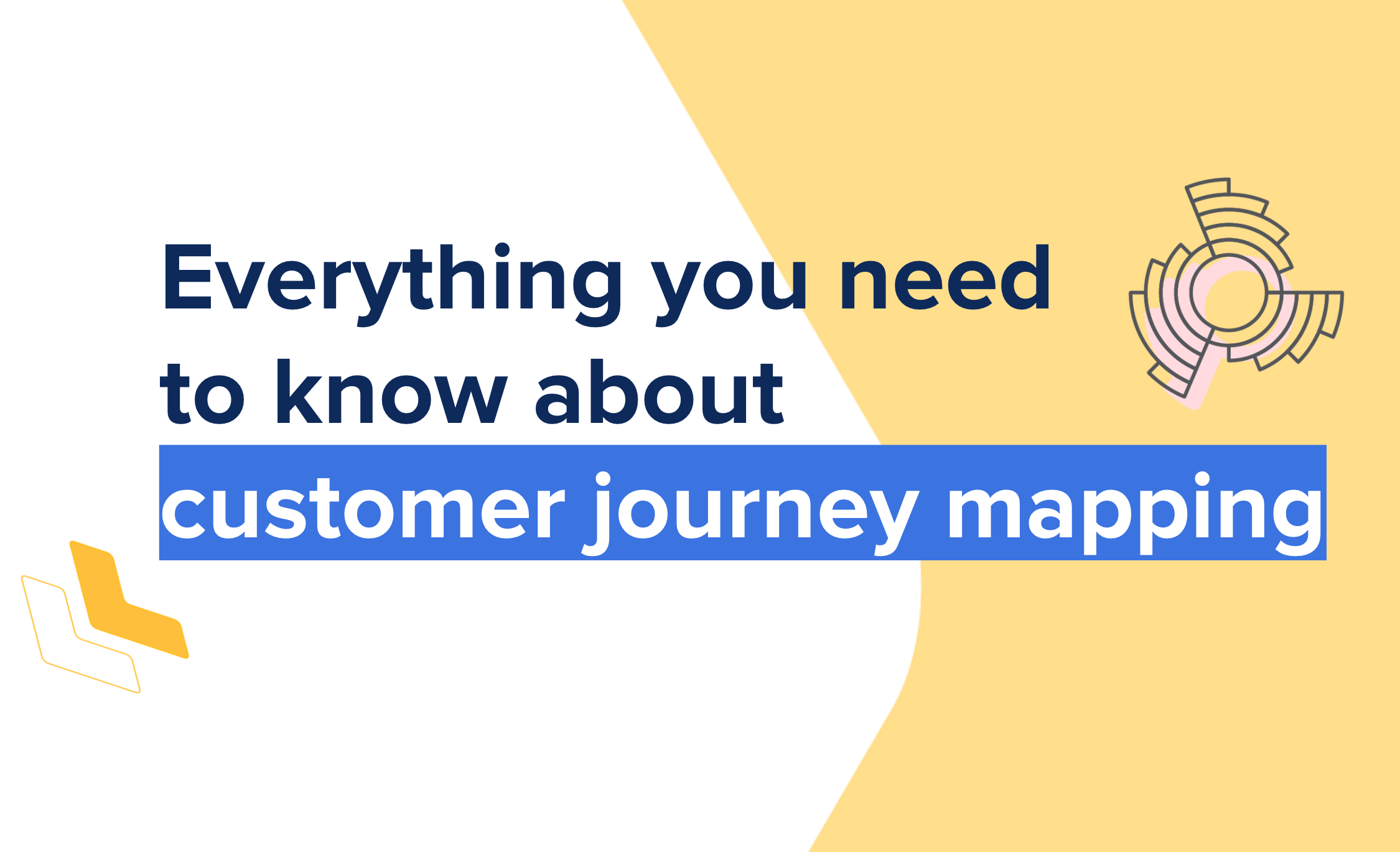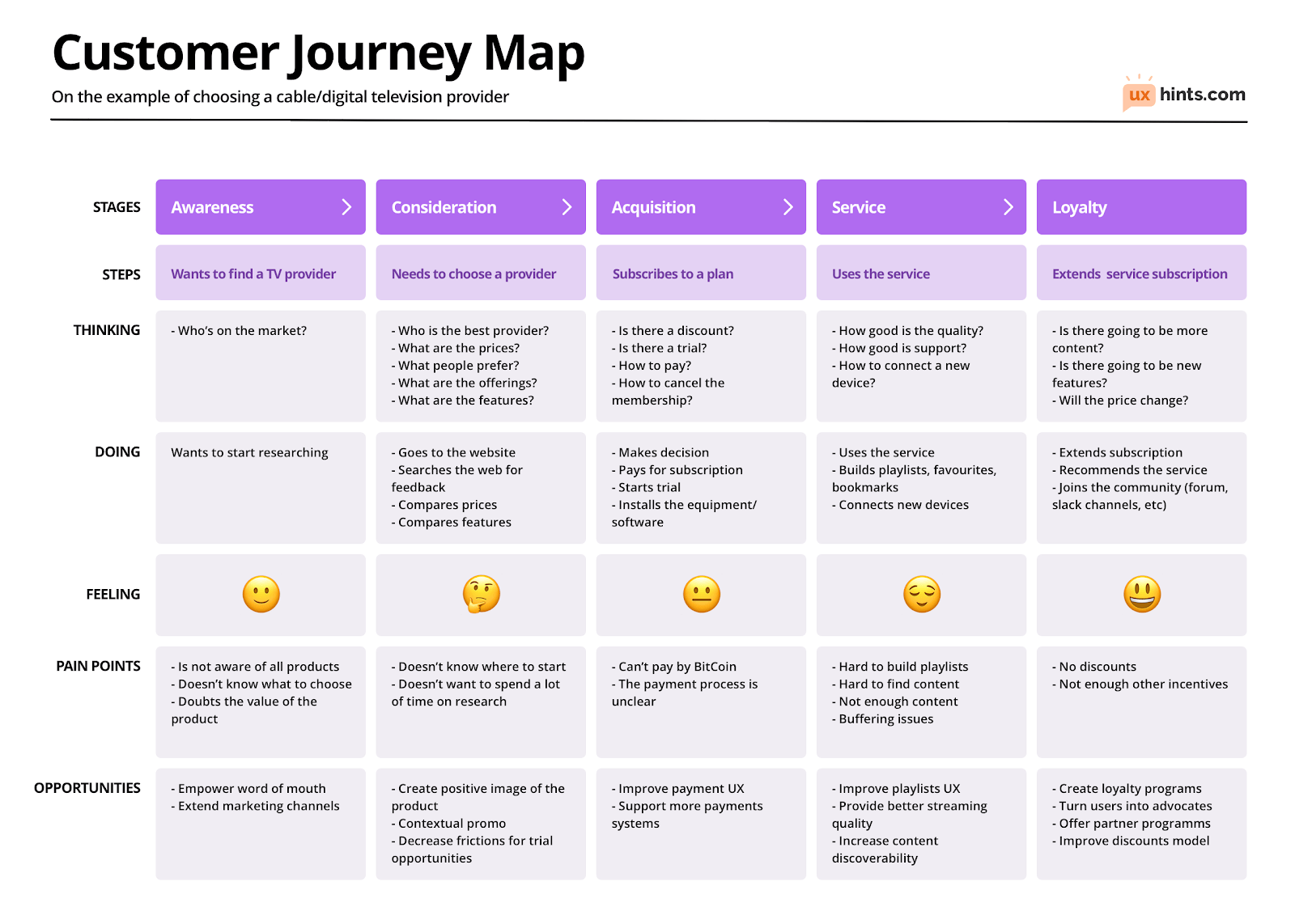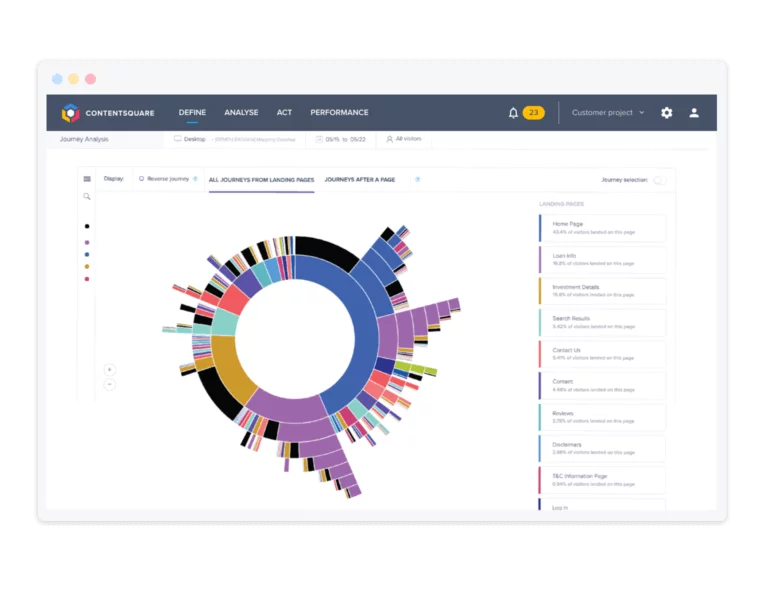How to use customer journey mapping to improve your business

At Contentsquare, we’re committed to creating better digital experiences for all. Our advanced customer journey analysis shows you exactly how visitors progress through your site from entry to exit. So you can discover your biggest opportunities and frustrations within minutes.
Mapping the customer journey
A few decades ago, the customer journey was pretty straightforward.
A customer may see an ad in a magazine or on television, and then head out to buy your product from a local shop. For marketers, life was relatively simple.
But thanks to social media and advancements in digital marketing, the way we shop has changed. What may have once been a three- or four-touchpoint journey from awareness to purchase, can now be influenced by hundreds of messages coming from a broad range of channels.
Display ads, WhatsApp, social media promotion, Amazon Alexa, email marketing; in 2021, the available touchpoints for you to get in front of your customer are almost endless.
This means customer journey mapping is a necessity if you want to make sure you’re getting the right message, to the right person, at the right time.
Why? Because the key to success is making sure your customer’s path to purchase is as smooth and frictionless as possible. And customer journey mapping will help you do just that.
What is a customer journey map?
A customer journey map is a visual representation of every touchpoint a customer has with your company, from the awareness stage right through to the purchase and then the advocacy stage.
An in-depth customer journey map can help you understand your customers better by uncovering common pain points in their path to purchase.
In eCommerce, for example, marketers will use a customer journey map to identify which stages of the buying journey are causing problems with their target audience.
Then, by mapping out the content you have against each stage of your customer’s journey, you’re able to pinpoint gaps in your content marketing strategy.
Maybe you don’t have enough case studies to help get bottom-of-the-funnel prospects over the line? Perhaps customers are losing interest in your site because you don’t have buyer’s guides for those in the consideration phase?
One of the main benefits of a customer journey map is being able to ensure you have content ready for each stage of your buyer’s journey to help progress them down the funnel, entirely friction-free.
What is customer journey mapping?
Customer journey mapping is the process of creating a customer journey map. This is a super important process and, while it may take some time and energy to complete, will be worth it in the long run.
It means getting to know your customers as best you can; where they hang out online, what problems they’re trying to solve, what their budgets are, what content they like to consume and how they like to consume it.
The customer journey mapping process
Now you know why you need a customer journey map, how do you create one?
A basic customer journey map is relatively straightforward to build, but it will take some time to research and populate with great content.
You’ll also need to keep it updated in line with a fast-paced marketing environment and be prepared to adjust and optimize it as you go.
How to create a customer journey map
Step 1: Persona research
The first step is finding out as much about your customers as possible.
Remember, effective research relies on more than just current customer interviews. So you’ll want to find out why people didn’t choose you too.
Speak to your sales team about opportunities that you’ve lost historically and what issues were sighted most commonly. Why did people choose to go elsewhere? What might have persuaded them to stay?
Take a look at your web analytics to see what content your customers are engaging with and what impact these touchpoints have on moving people down the funnel.
Speak to your customers and ask them directly what made them choose you over competitors.
- What do they like most about you?
- What improvements have they seen since choosing you?
Step 2: Define touchpoints
Once you know who your customers are and what they need, you can start plotting the touchpoints they have with your business.
These touchpoints will depend on what industry you work in and how your specific customers interact with your brand.
For example, the first few touchpoints for a coffee shop might look like this:
- The customer sees a geo-targeted ad
- The customer visits your shop
- The customer buys coffee
- The customer follows your brand on Twitter
Whereas for a clothing company, it might look like this:
- The customer sees a social media promotion
- The customer clicks on your website
- The customer browses your site
- The customer adds an item to their basket
The stages of the customer journey are different for everyone, but here are the most commonly used stages to get you started:
Awareness > Consideration > Purchase > Retention > Advocacy
And here are some examples of the types of content you’ll need for each stage:
- Awareness: Social media ad, PPC
- Consideration: Blog content, buying guides
- Purchase: PLP, PDP
- Retention: Email nurture
- Advocacy: Co-creation, social media posts
Step 3: Choose your tools
Once you know your customer and what their touchpoints look like, it’s time to plot these onto a customer journey map.
A Google Sheet is a great place to start. It’s easily editable and shareable with dropdown functionality and conditional formatting to keep everything organized.
Step 4: Populate your customer journey map
Next up, add columns for each stage of the buying process that you defined earlier. These don’t have to be too granular to start with, though you may want to expand them later on down the line to create super personalized content.
Add in details about how your customers are feeling at each stage of their journey, plus what pain points they might have. The more detail you can add here, the easier it will be to create the right content.
Step 5: Create kickass content
Once mapped, it’s time to make sure you have kickass content for every stage of your customer journey map. Your map will inform your content strategy; such as creating more upper-funnel content (such as PR stories and SEO-focused blog content) or better optimizing your bottom of funnel content (such as Product Listing Pages and Product Detail Pages).
Next up: Layer your audiences
If you want to go one step further, you can layer more specific audiences to ensure your content consistently hits the right spot with different audiences.
For example, you may want to create customer journey maps for different job roles or industries to make sure you’re delivering the right messages to them at the right time.
Whether you decide to segment your audience by most common pain points, job title, or industry, your customer journey map will help you spot points of friction and content gaps to ensure a smooth customer experience for everyone.
Example customer journey maps
What does a customer journey map look like in practice? Here are two examples of customer journey map layouts that you may want to use for inspiration.
Example 1: NN Group
NN Group has defined their buying stages based on their customer’s very specific buying cycle. Consider, explore, compare, test, and negotiate. They’ve also included quotes from customers at various stages to better understand their pain points and feelings.

Example 2: UX Hints
This second example from UX Hints uses a grid format to map out what their customers are thinking, feeling, and doing at each stage of the buying process. Using emojis is a quick and engaging way to share feelings, something you may want to emulate in your customer journey map.

Take away the hassle of digital customer journey mapping with Contentsquare
Once a customer lands on your site, our customer journey analysis software tells you everything you need to know about their digital journey.
From uncovering their most common pain points in seconds to understanding where unexpected drop-offs occur and what optimizations will increase engagement on your website, we can help you get as close to your customers as possible.
What’s more, our signature sunburst visualizes aggregated data from every single one of your customer journeys, allowing you to make quantitative and qualitative decisions about which website optimizations will have the most positive impact.
If you’re interested to know more about your customers and how they interact with your site, get in touch with us today.




